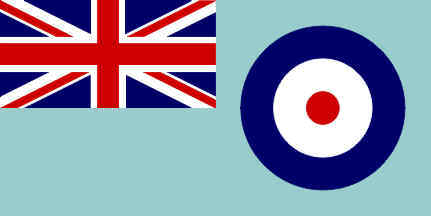
Major Headquarters (Headquarters RAF Germany/ 2nd Tactical Air Force)
A page with no text means that we have no information at present, or that a page is under construction for that base. In some cases the information may be very limited, so anything you may have will be most welcome and will be credited to the contributor.
Where Squadron numbers, titles, aircraft at the time, and stations have been quoted, this has been done to the best of ability and knowledge, and with the best of intentions. If you see mistakes, please tell us and we will do our best to rectify them; it would be even better if you can supply information to support any corrections.
Where Flying bases are shown with * next to them, these base are those that were possibly only used for a very short time immediately prior to the end of the war, and/or for a short time after. Some locations may appear twice, in two different roles, but the link will lead to the same page. Corrections and additions gladly accepted.
Bad Eilsen (1)
Rheindahlen (2)
Operational (Flying) Bases
Achmer *
Ahlhorn
Brüggen
Buckeburg
Celle
Dedelstorf *
Detmold
Drope *
Fassberg
Flensburg *
Fuhlsbuttel (Hamburg) (A)
Gatow
Geilenkirchen
Goch*
Grossachensheim*
Gütersloh
Hildesheim *
Hopsten *
Hustedt *
Husum
Jever
Laarbruch (B)
Langenhagen *
Lubeck (also known as Blankensee) (C)
Luneberg *
Nordhorn *
Norvenich (Page under construction)
Oldenburg *
Plantlunne
Quackenbruck *
Rheine *
Schleswigland
Stuttgart/Sersheim *
Sylt
Varrelsbusch *
Wahn (D)
Wildenrath
Wunstorf
Logistic/Support
Butzweilerhof
Eindhoven
Hehn
Nordhorn (3)
Oldenburg
Uetersen
Sundern
Communications
Bad Odesloe (4)
Borgentreich
Hamburen
Handorf
Husum (5)
Obernkirchen
Putlos
Scharfoldendorf
Uchte
Hospitals
Rinteln (6)
Rostrop (7)
Wegberg (8)
Westerland (Sylt)
Various
RAF Germany Winter Survival School (RAFGWSS)
Finkenwerder (9)
Havelsee (9)
NOTES
(1). Original site of HQ RAF (G) 1945-54
(2). Site of HQ RAF (G) 1954-93
(3). RAF (LATER NATO) Bombing Range
(4). Anecdotal evidence suggests that there was an RAF Communications unit in the area in the late 1940s/early 1950s (May have been a satellite of RAF Lubeck.)
(5). There is evidence that this site was considered for refurbishment as a Transport Base for the then 2 Parachute Brigade in the late 1940s when the Brigade was moved to Schleswig Holstein in 1947/48. Work ceased when the Brigade returned to the UK in late 1948
(6). Under RAF command till opening of the new RAF Hospital Wegberg in 1953
(7). Originally known as No 1 Mobile Field Hospital based on RAF Rinteln deployed to Rostrop in 1953? following closure of BMH Oldenburg
(8). Opened in 1953 to provide specialist medical facilities for RAF personnel and their dependents in the Lower Rhineland. Ultimately became the medical focus for all British personnel in the area following the closure of BMH Hostert.
(9) Finkelwerder and Havelsee have only recently come to light, and information is still being gathered. They will be moved to the relevant section when the pages are constructed if necessary.
A. Now Hamburg Civil Airport
B. Now Dusseldorf (Weeze) Civil Airport
C. Now Hamburg (Lubeck) Civil Airport
D. Now Koln/Bonn Civil Airport
Because of the constant renumbering, disbanding, and reforming of RAF Squadrons, it is not always possible to be precise about the actual locations. Information is added after as much information as possible has been gathered up. It is recommended that readers look at other pages for more information.
In the course of continuing research for this page, and the individual RAF Bases, it has been discovered that a number of Polish manned Squadrons were based in Germany for a short time after the end of hostilities. Contact was made with a Polish website dedicated to those Squadrons, and the webmaster has given permission to use information and photographs from his site where it connects to BAOR, as well as sending a map of Ahlhorn. This is now on the RAF Ahlhorn page. Other photographs will be added when they are identified.
He also corrected a statement I made to him regarding “Polish RAF Squadrons”. This is shown below.
Paul Pearce-Smith
I would like to remark that during the war there were not “Polish RAF squadrons”. The Polish Air Force according to an agreement between Polish and British government (signed in 1940) became an independent force and Polish squadrons (unlike Czech squadrons) were in fact not a part of the Royal Air Force (but of course in combat operations were dependent on RAF). Polish soldiers had their own PAF service numbers, Polish ranks (but RAF ranks as well), Polish flying schools etc. I am very happy that you will mention Polish units on your website. I just wanted to mention this fact because for us, Poles, it does make a difference. We are proud of our airmen and we emphasize PAF’s independence.
Wojtek Zmyslony
Wojtek’s site can be seen here in Polish and here in English. Click on Wielka Brytania 1940 – 46 on the left hand side of both versions.
